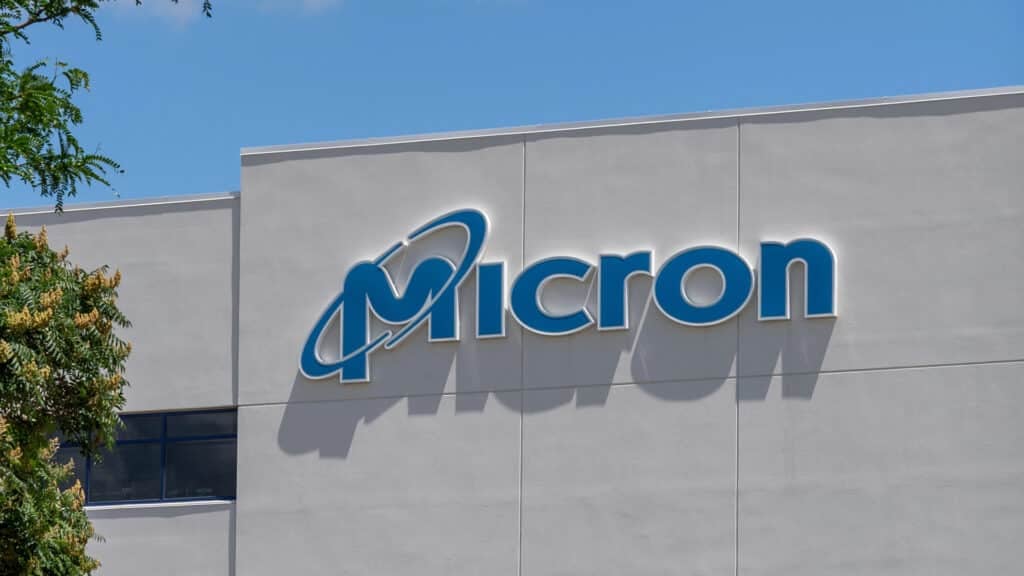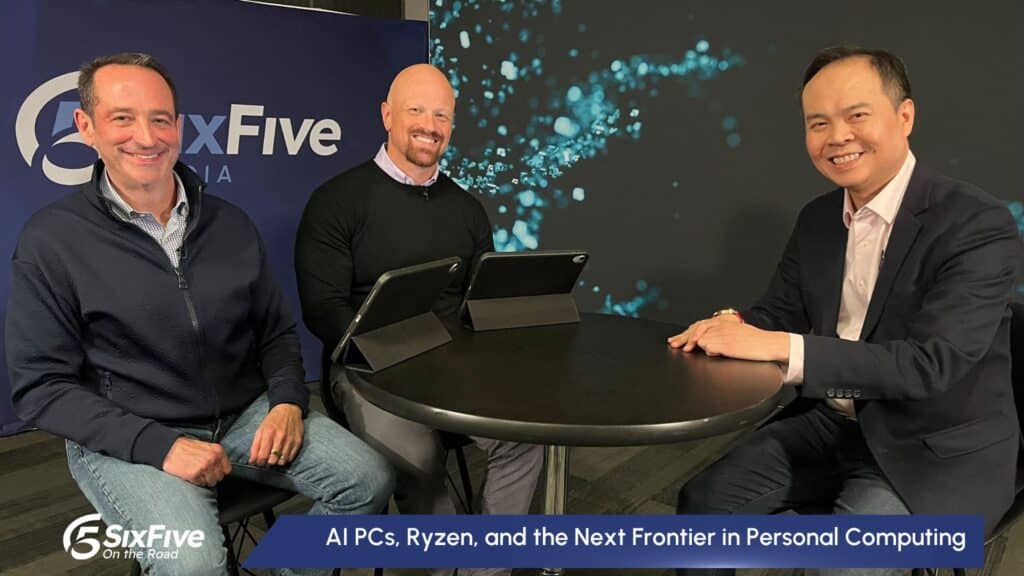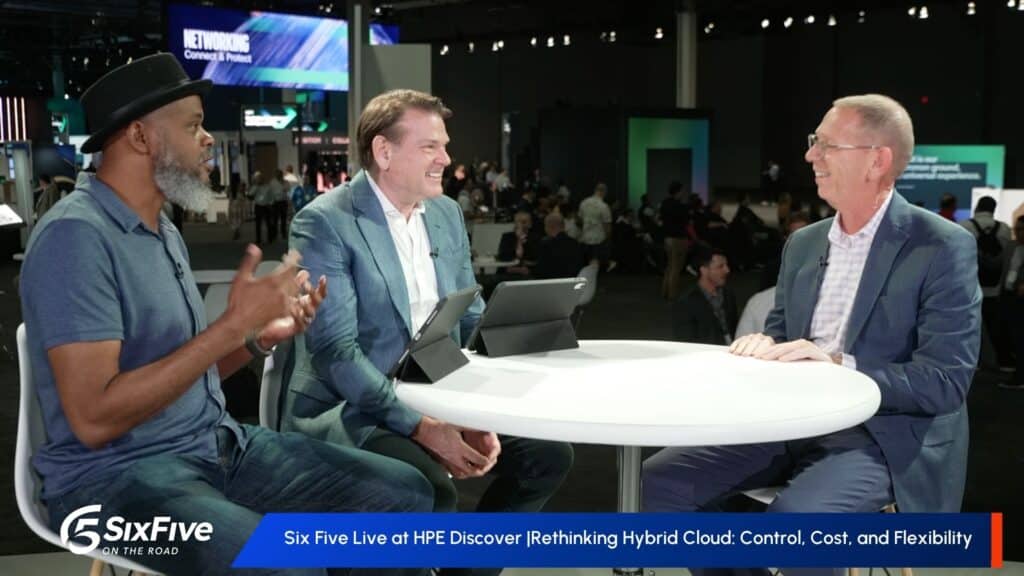Technology’s impact on the business landscape continues to evolve. As this unfolds, remember the trifecta of technology, process, and people are the key elements in a successful business strategy. Greg and Daniel welcome Rick Pittman, Vice President CIO Research at Info-Tech, to uncover people-centric strategies for building the talent pool of tomorrow.
It was a great conversation and one you don’t want to miss. Like what you’ve heard? Check out Episode One of The Main Scoop, Episode Two of the Main Scoop, Episode Three of The Main Scoop, Episode Four of The Main Scoop, Episode Five of The Main Scoop, Episode Six of The Main Scoop, Episode Seven of The Main Scoop, Episode Eight of The Main Scoop, Episode Nine of The Main Scoop, Episode Ten of The Main Scoop, Episode Eleven of The Main Scoop, and Episode 12 of The Main Scoop. Be sure to subscribe to never miss an episode of The Main Scoop series.
Or stream the episode from your favorite platform:
Don’t Miss An Episode – Subscribe Below:
Disclaimer: The Main Scoop Webcast is for information and entertainment purposes only. Over the course of this webcast, we may talk about companies that are publicly traded and we may even reference that fact and their equity share price, but please do not take anything that we say as a recommendation about what you should do with your investment dollars. We are not investment advisors and we do not ask that you treat us as such.
Transcript:
Greg Lotko: Hey folks, welcome to the next episode of The Main Scoop. Today, we’re here to talk about building a sustainable technology workforce. Now look, normally when we’re talking about technology, we’re talking about hardware, we’re talking about software, we’re talking about how these different technologies interact. But at the foundation of it, it’s all people. It’s people that are developing the hardware, it’s people that are developing the software and the applications in your own businesses. I believe we got to invest in them and invest in them heavily. They’re our most important and best asset. Let me pull in Dan Newman here, my co-host, nice to have you with us.
Daniel Newman: It’s good to be back.
Greg Lotko: All right, I want to hear what you think.
Daniel Newman: Well, so I do agree with you. After writing seven books on digital transformation, my most recent was human machine. I’ve actually been-
Greg Lotko: You did that without technology, right? You didn’t use ChatGPT.
Daniel Newman: I might’ve used a laptop. But what I guess I was trying to get at here is the gyrations and evolution of those books really went from a very traditional, not analog, but metaphorically analog workforce to digital. In the last six months, we’ve actually seen change at a rate we’ve never seen before. And this is bringing up a lot of questions about what’s the role and the responsibility of a company. As we’ve heard over the last few weeks, we heard companies coming out to market saying they’re going to slow hiring, not hire because of AI. We’re hearing trend lines about white collar jobs. We used to be, well, robots are going to replace the blue collar jobs. Now it’s robots, AI, are going to replace the white collar jobs.
I really think there’s an important bifurcation, and I want to talk about here today with our guest. That bifurcation is going to be, it’s the responsibility of the company to always be more productive. Meaning investing in technology that’s deflationary makes you more successful. It’s also the responsibility of the company to use that additional productivity to grow. That’s something that we’ve not talked as much about, and that’s what I think is such a great opportunity for modernization is let’s take all this tech make bigger, better, more efficient, more productive, and more exciting technology that changes the world.
Greg Lotko: I agree. We talk about it, we talk about investing in our businesses, we talk about investing in our technology. I don’t think often enough we talk about investing in our people. You invest in the people to be able to use that technology to make the business grow. Let’s pull in our guest. With us today is Rick Pittman. He’s a VP at Infotech Research Group. You kind of heard Dan and I kick this off. Initial thoughts, what do you think? We’re talking about technology people, whether or not technology will replace the people, and whether or not we need to invest in people as much as technology.
Rick Pittman: Of course, we need to invest in people and nurturing those people and making sure they enjoy the culture and having fun at work. Those are all things that make successful companies. Technology is important, but not nearly as important in my view. Even with generative AI, I think it’s going to remain the same.
Greg Lotko: Dan talked about, we’re hearing some companies cutting back, cutting people, but then you hear other companies, even while they’re doing cuts saying, “Hey, I need these particular skills and these are the types of resources and the technologies I need them to interact with.” How do you get there? Is it about just going out and hiring different people, or is there a different approach?
Rick Pittman: Well, there’s a lot of different approaches. You do have to have, we have in our 2022 talent trends report, we start with strategic recruiting finds good talent. That’s part of it. We’re also seeing a lot of people invest internally in their people. Upskilling, re-skilling, et cetera. I was just reading an article today or yesterday about what Hartford Life is doing. They’ve started the Hart Code Academy where they train internal smart people on tech skills and they put them through bootcamps, et cetera, and within a period of time they’re productive IT people.
Greg Lotko: When I think about it, I always think it’s balance. Right? There are going to be times where you need to expand your team or you need to augment it with particular skills. You may not have them readily available internally, or you may not have the people that want to or could learn those particular skills. I think there’s really a balance. You hire externally to bring some people in, but the people that you have in your own organization already know your business. They already know your model. They already know all the teams that they have to interact with. You oftentimes can get there faster if you are training the people internally. That’s also what I think about when I hire externally. I don’t want to hire somebody that I think is a one hit wonder, that they’ve only got one thing that they can do. I want to hire people that I think as they come into our company, they’ll add something to us, but they’ll also be able to learn other things and be able to do more than just that one thing in our company.
Daniel Newman: I do think that the more things change, the more things remain the same. I think we’re going through fast iterations of technology, and I do think that roles and profiles are different, but I think if you look at the core idea of culture being critical to a business’ success, that actually hasn’t changed no matter how much technology has moved. Now, what has changed, and this is sort of an interesting inflection though, where I might disagree with Rick, whereas I do think generative AI will have a material change and impact on business. I don’t think it’ll change the fact that people will need to feel valued and that cultures will need to be driven by leaders that understand where their people are valued.
Having said that, I guess I’d be interested, Rick, in your take is when the pace gets as voracious as it is where universities cannot keep up training, we heard developing was going to be the key, become a developer, you’ll have a job forever. Now we’re talking about text to code. Even if you went to college, became a developer, what you learned in the first two years was already obsolete by the time you were in your second two years of college. How does our system end up creating an opportunity for people to go through proper protocols, go through the training, do it fast enough and keep up and actually bring people into the workforce that can be really productive for the enterprise?
Rick Pittman: Yeah. When we look at hiring people, we have to make sure that we’re hiring them for the right reasons, that we use the right criteria. We’ve talked about this before. It’s important to hire people that are adaptable, resilient, et cetera. I was chided a while back, a few years ago at a CIO meeting that I was at by one of the local deans of business at one of our schools. And she’s asked us why we hire people, what we do or what kind of people we want to hire. We said again, what I said before, resilient, adaptable, smart, able to deal with whatever comes at them.
She said, “Okay, well, what are your job ads saying? Are they saying Oracle DBA with 10 years of experience in X?” We said “Sort of they are.” And she said, “Well, you need to stop doing that. You need to hire people that you want regardless of what comes at them. And those are the people that will stay at your organization and those are the people that will be valuable.” Not specific skills based hire based hiring unless you really have to if it’s that technical a field. And
Greg Lotko: I think look at the university degree the same way. I mean when I look at it, I’m not looking for a particular class or a particular teacher or subject or something like that. I mean, unless I know the university and I know a particular thing is rough or hard to learn, because what I’m looking at the university degree is really just proving that the person is trainable, proving that they can learn. That’s what I want in people because technology is always going to advance. New things are going to come out and people are going to have to learn. You want that trainability. You also want somebody who’s kind of got grit and stick-to-it-iveness. Right? People that don’t give up easily that they go, “Hey, this is a challenge, it’s an obstacle, whatever. There’s something I got to learn, but if I’m not picking it up right away, I’m going to stick with it. I know that I can overcome this.” That those are the people you want.
Daniel Newman: Well, we’ve got this bit of a juggling act because there really is no current work stream for identifying your rapid adaptable workforce skillset. It’s just right now what you get is you’ve got kind of a path that’s still very traditional. We have our kids, my oldest is graduating from her undergrad. My youngest daughter is going to be a senior and she’s thinking about what college to go to. Half of me is like, I want you to go because it’s such a great time in your life and such a wonderful experience. But I could tell you if you spend the next two years with me, I probably could prepare you better for work than they’re ever going to get you prepared for in the university. It’s because the university hasn’t been able to transform. And so then you look at the online kind of training and there’s companies that do a lot of that kind of online on demand real time.
Rick, I’d love to get your take. I know this is what you spend all your time, a lot of your time thinking about. Hopefully not all, hopefully you catch a movie or a ball game or whatever it is you do from time to time. But what do you suggest to companies that companies and leaders that want to really get started in terms of finding this talent gap? It might be for mainframe, which by the way has a huge talent gap because people may or may not continue going into it. Or it might be for cloud skills, developing skills, generative AI, all these things. How do you suggest-
Greg Lotko: There’s skills gaps all over the place.
Daniel Newman: Everywhere.
Rick Pittman: I do hear about it relative to mainframe. That’s the space that I’m in. But it’s largely misunderstood. It’s people who believe that there aren’t people interested in learning about mainframe or that they can’t pick it up. I will tell you this year we’ve already hired almost 75 people. Across those postings we had over 4,500 applicants. People that say, oh, they’re not interested in working in the mainframe space, just not true. We’ve proven that. I think on top of that, you got to look within your own organization. We’re seeing more and more companies that are coming to us and saying, “Hey, I’ve got these good people in my company that may not know the mainframe space. Can we run them through training? Can you give them a deep dive immersive experience?”
We’ve now, through our Vitality residency program, run over 150 people through that. Some of them have come from companies who were working in the distributed space or the cloud space. They had a technology bent and now they’re learning about mainframe. Others. We’ve had people come through our program that we source that were veterinarians before, or they were working in a car dealership, or they were French studies majors. But in the interview process, one, they displayed interest and ambition that they applied. When we talked to them about their life experiences, the different things they had learned and the skills that they had applied and how they viewed those experiences, how they viewed learning about it, they convinced us that, hey, they’ve got the grit, the stick-to-it-iveness to do this.
I think you look outside and you got to explore probably or test a little more heavily in your conversation to make sure they’ve got those qualities that not only will allow you to train them, but will be a good fit in your company. Then you really need to look internally, look at what you already have, the people who are excelling in your company, but maybe just doing a different role and now you invest in them to be successful.
I completely agree with you. When we talk about skills gaps, first of all, there was a report that came up this year that IT skills gaps will exist into the next five years and only get worse. Other reports from 1986 that said exactly the same thing. Skills gaps in IT have been a pretty persistent thing that have come and gone.
Greg Lotko: Even before that. Right? Look at the sixties and the seventies, before many most schools did not have a COMPSCI major. There was a gap. Where did we get those people? They were accountants, they were finance people.
Rick Pittman: Absolutely.
Greg Lotko: They were people who had a math aptitude. You found people, you trained them however you did it, and then brought them in. They excelled. Not only did they excel, but those people who weren’t specifically trained in the newest technologies that are coming out today, those are the people who invented them.
Rick Pittman: Yeah, no, absolutely. When we look to the outside, again from our talent trends report from 2022, strategic recruiting finds good talent. You have to have a plan. It’s not just a sit, standby, or wait it out situation. The skills crisis is about inaction. Those who are willing to take action and have a plan will have a talent plan now and well into the future. I think that was a centerpiece of philosophy in the report that we did on skills. It doesn’t just apply to mainframe, it applies to whatever skills shortage or perceived skill shortage there is.
Daniel Newman: Rick, as we sort of close down this conversation, by the way, very interesting. I think everybody right now, this is such a great inflection point to be having this talk. You have your study. Give us a few key findings, and of course I’d love to get a couple bullets from you as you’re advising and sharing your opinions to the world is how do people get started in dealing with this and executing?
Rick Pittman: The report we did at Infotech was specifically on mainframe. I think it’s generalizable to IT skills. The first thing we did, we looked at the current state of the mainframe to say, will it persist? Will it be a place where people can have careers well into the future? I think you from the mainframe world already know that’s common knowledge. The answer is yes. When I was a CIO, we had a mainframe as our core app that ran our core app. We didn’t even think about it. We just thought, legacy, need to get off it, need to modernize it, need to do something about it. We’re trapped. We came to the conclusion in the end that we weren’t. We hadn’t been asking the right questions. Skills were a key part of it. Is there really a skills gap?
When we did the report and we relied on secondary reports as well, the world doesn’t need another mainframe survey, but we asked the question, is the skills gap real, those fears? We found it’s real, but it’s exaggerated in the minds of many. No universities are teaching anything about those skills anymore. Well, that’s starting to change and it’s starting to be reframed. They reframe it as you’re not working on old technology, you’re working on the infrastructure of this country where a lot of things run and it’s a great mission to step forward and to be part of this. Universities are coming around in that regard. Then the third thing was just the report showed inconsistent results. There are skill gaps for sure, but they’re handleable. Companies like Broadcom and like IBM, and to a lesser degree BMC, are stepping up to help clients in the mainframe space. It’s got a really vibrant ecosystem, and I think that can apply to anything. Again, back to our report, strategic recruiting or a strategic plan will get good talent.
Greg Lotko: Look, mainframe today for decades before, but today still is the infrastructure that’s at the core of running the world. The other reality is there’s less people in this space maybe than there were decades ago, but they’re doing so much more with the platform because of the expansion of the technology and the capability. On top of that. Dan, we’ve talked about this before, the platform has been opening up and you can interact with it with all these open source distributed cloud technologies to access the data and the processes that are there. You can take skills that maybe don’t have to have as much core mainframe knowledge and get the value, interact with it. Dan, I’ll turn it over to you to bring us home and kind of your final thoughts.
Daniel Newman: Yeah. First of all, Rick, it’s been a lot of fun chatting to you. This is a topic I think that if it’s not be near and dear to the heart of every business leader, I know we love technology here, but we got to remember it’s always technology, people, and process that really does drive meaningful transformation in any organization. I think really as I kind of look at what we talked about today, I think first and foremost is that the talent gap is often perception. Companies that get it right don’t have a talent gap. Now of course, we have more meager times. The macro-economy can create more difficulty. It can definitely drive pricing to find that right talent into a different set of directions. There’s always a difference between the haves and have-nots.
The haves understand the plan. They’ve made the investment, they kind of understand the profile and the persona of the types of people they want to hire. They understand their strategy for diversity in their workforce and finding people that A, maybe fit the traditional skills and B, people that are going to come in and disrupt the traditional skillset. Of course, the other thing is there’s lots of resources out there. We talked about more traditional academia, but also many tech companies have put upskilling programs into place. There’s lots of resources. A lot of this has been open sourced, whether it’s the mooks at the big universities that are sharing their information and insights on things like human resource and human talent development, all the way to the biggest companies in the world that have largely laid out their plans for workforce development and put them right on the chair of the airplane that anyone can read. As we go through this, as I hear it, Greg, it really comes down to you need to commit to your plan.
You need to stay to your plan. You need to have a plan. Is that the perfect solution for everybody? Of course it’s not, but companies that get it, the haves will always do better than the have-nots. You source talent, you train talent, you develop talent, you keep them in the boat, and you continually add and diversify. Companies that do that will always outperform the companies that don’t. Man, what a scoop. I always love these soft sell conversations, Greg, because the soft sell side of the business is so important to getting the big, hairy, audacious challenges right.
Greg Lotko: I’ll morph your soft sell there a little bit. Right? We talk about technology, we talk about hardware, we talk about software. It’s all about the people.
Daniel Newman: It’s all about the people.
Greg Lotko: And people are softer than hardware or software. There you go, all about the people.
Daniel Newman: If we get it right. Thanks again, Rick. Greg, thanks so much for joining us. Hit that subscribe button. We love having you here with us at The Main Scoop. See y’all later.
Author Information
Daniel is the CEO of The Futurum Group. Living his life at the intersection of people and technology, Daniel works with the world’s largest technology brands exploring Digital Transformation and how it is influencing the enterprise.
From the leading edge of AI to global technology policy, Daniel makes the connections between business, people and tech that are required for companies to benefit most from their technology investments. Daniel is a top 5 globally ranked industry analyst and his ideas are regularly cited or shared in television appearances by CNBC, Bloomberg, Wall Street Journal and hundreds of other sites around the world.
A 7x Best-Selling Author including his most recent book “Human/Machine.” Daniel is also a Forbes and MarketWatch (Dow Jones) contributor.
An MBA and Former Graduate Adjunct Faculty, Daniel is an Austin Texas transplant after 40 years in Chicago. His speaking takes him around the world each year as he shares his vision of the role technology will play in our future.











